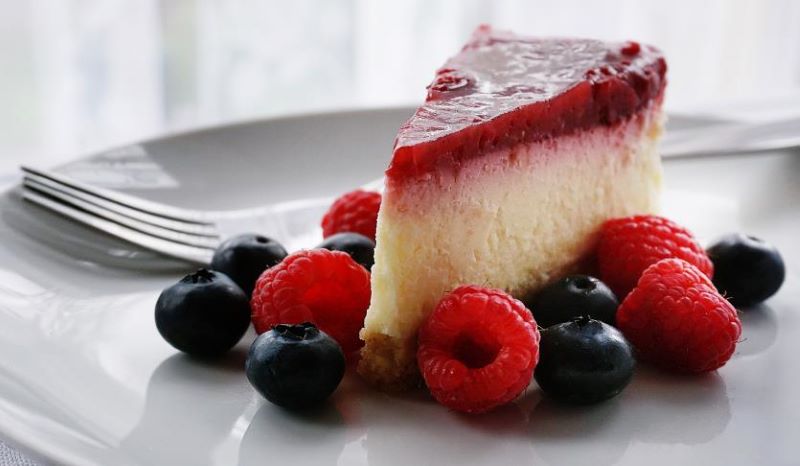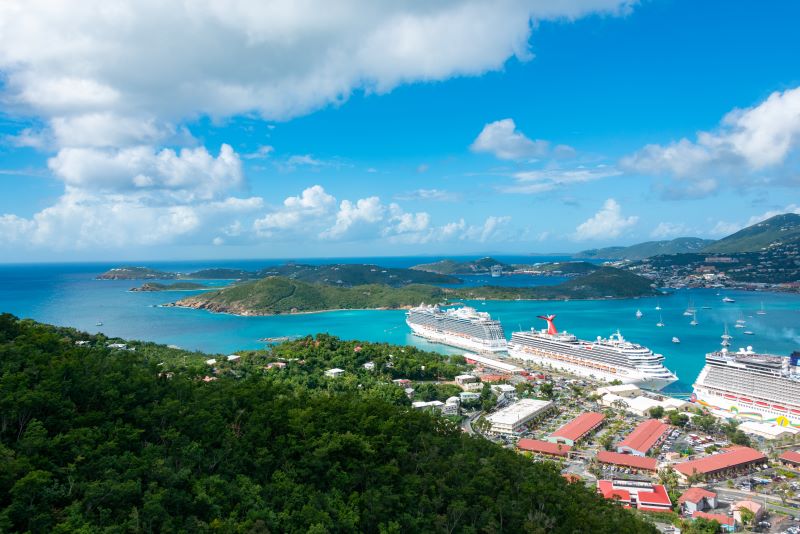Linger On Ecuador's Pacific Coast

If you're connecting through Guayaquil for a Galapagos cruise, plan to stay a few days to explore Ecuador's Pacific Coast. Ecuador's shores are lined with beautiful beaches, unspoiled nature preserves, cool surf towns, and fascinating places to visit. This region is one of the travel world's best-kept secrets. There's so much to see and do here.
Located on the Guayas River, the populous city of Guayaquil is filled with lush green spaces, museums, chic neighborhoods, and waterside boardwalks for relaxing strolls. Malecón 2000, Parque Seminario, Las Peñas, Cerro Santa Ana, and Parque Histórico Guayaquil are just a few of the highlights to be found here. Guayaquil's Botanical Gardens are a wonderful destination for nature lovers and offer a superb view of the city as well.
The region outside of Guayaquil is filled with banana and cocoa plantations. This is cowboy country as well. Visitors can head out to one of the haciendas in the Guayas province for horseback riding, cocoa demonstrations, and even a rodeo if the timing is right. It's a great way to experience some of the local culture.
A drive up Ecuador's coast is richly rewarding for those who have more time. Located just a two-hour drive north of Guayaquil, Salinas is a well-developed resort destination with a wide stretch of beach. The seaside Malecón here is filled with high-rise condominiums, hotels, restaurants, and artisans selling their wares. Watersports and surfing are very popular in this area. The upscale Salinas Yacht Club divides the beach area and many boats are available for fishing, whale watching tours, and day trips. The Museo Sumpa, located in a town nearby, provides an interesting glimpse into the area's past.
Staying in Salinas for several days is the perfect way to relax before or after a Galapagos cruise. Located right on the beachfront Malecón, the Barceló Colón Miramar is one of the nicest places to stay for visitors who would like to spend a night or two in this village by the sea. Spend your days sunning at the beach, sampling a variety of delicious local seafood, and relaxing at one of the many delightful cafés.
Further up the coast, Montañita beckons. This tiny town is a surfer's paradise and has become popular with backpackers and tourists as well. Here you'll find hip bars, surf shops, restaurants with live music at night, inexpensive hostels, and artisans from Ecuador and other parts of Latin America. The surfing in Montañita is superb, particularly around the point break at the northern end of town. Montañita has secured its place on international surfing competitions - and its lively nightlife has earned considerable renown as well.
Some of coastal Ecuador's most spectacular gems are located further north along the Pacific shores. If you have a few days, use Hosteria Alándaluz as a base to explore all that this enchanting area has to offer. Located just south of Puerto López in Manabi, Hosteria Alándaluz is an ecologically oriented complex of attractive rooms and suites situated on a nice stretch of beach. All of the buildings are constructed of stone, bamboo, wood, and palm thatch and some rooms have small fireplaces, balconies, and outside showers. Many rooms in the huge main lodge and the Torrecilla section are particularly spacious. Hosteria Alándaluz is popular with Ecuadorian families and kids will love its outdoor pool, playground, game room and ping-pong tables.
Nearby Puerto López is an authentic fishing village encircling a wide bay filled with colorful boats. In the morning, travelers can come down to the beach to watch the fisherman bring in their catches and work on their nets. Puerto López is also one of Ecuador’s most popular whale watching destinations. Many tour companies in town are available to take out guests hoping for close encounters and photos, but whales can also often be spotted from shore. Several species of whales pass through the area between June and September, so make your reservations early if you’re planning to arrive at that time. Keep a watchful eye even if you’re traveling through the area later in the year. We were lucky to see several humpback whales breaching and swimming near our boat in early November as well.
Ecuador’s only coastal park, Manchalilla National Park, is located just a short drive from Puerto López and is not to be missed. On the mainland, the park is made up of over 135,000 acres of tropical scrub desert and dry forest. This nature preserve is fantastic and hiking here is excellent. The park also contains the offshore islands of Salango and La Plata, otherwise known as the “Poor Man’s Galapagos.” Accessible by boat from Puerto López, Isla de la Plata is home to many Galapagos species of birds including boobies, frigate birds, and waved albatross. There are several hiking trails around the island – each loop takes approximately two hours. Sea turtles and colorful tropical fish can typically be seen by snorkelers in the waters around Drake’s Bay and dolphins (and whales in season) can often be spotted on boat rides over to the island.
The crown jewel of Manchalilla National Park is Los Frailes, a long white crescent-shaped strand that is reputed to be Ecuador’s most beautiful beach. It’s quite possibly one of the loveliest in the world as well. This beach is the stuff postcards are made of, and you’ll find an aerial view of Los Frailes gracing plenty of them throughout Ecuador. Bring plenty of water and sunscreen when you visit, as there are no concessions on the beach. Umbrella rentals are available at one of the stands near the entrance to the beach and restrooms are located nearby as well.
Approximately six miles north of Puerto López is Agua Blanca, a little indigenous village that houses a church, a small archeological museum and a lagoon fed by volcanic springs. Many of the museum's treasures come from partially excavated dig sites located near the village, while others have been contributed to the museum. The finds appear to belong to the Manteña people who lived in this region between 800 and 1532 A.D. A guide is available to take visitors through the museum and souvenir stalls staffed by community members are located next door. After touring the museum, take a dip in the warm sulfur lagoon and follow the locals in spreading some of the therapeutic mud on your skin. Let it dry before washing it off. The process softens the skin and certainly makes for some great pictures.
There are more enchanting spots further up the coast, including Isla del Corazón, Bahía de Caráquez, and its nearby lovely boutique hotel, Casa Ceibo. For more information on visiting Guayaquil and Ecuador's Pacific Coast, visit Ecuador’s tourism website at https://ecuador.travel/.
Located on the Guayas River, the populous city of Guayaquil is filled with lush green spaces, museums, chic neighborhoods, and waterside boardwalks for relaxing strolls. Malecón 2000, Parque Seminario, Las Peñas, Cerro Santa Ana, and Parque Histórico Guayaquil are just a few of the highlights to be found here. Guayaquil's Botanical Gardens are a wonderful destination for nature lovers and offer a superb view of the city as well.
The region outside of Guayaquil is filled with banana and cocoa plantations. This is cowboy country as well. Visitors can head out to one of the haciendas in the Guayas province for horseback riding, cocoa demonstrations, and even a rodeo if the timing is right. It's a great way to experience some of the local culture.
A drive up Ecuador's coast is richly rewarding for those who have more time. Located just a two-hour drive north of Guayaquil, Salinas is a well-developed resort destination with a wide stretch of beach. The seaside Malecón here is filled with high-rise condominiums, hotels, restaurants, and artisans selling their wares. Watersports and surfing are very popular in this area. The upscale Salinas Yacht Club divides the beach area and many boats are available for fishing, whale watching tours, and day trips. The Museo Sumpa, located in a town nearby, provides an interesting glimpse into the area's past.
Staying in Salinas for several days is the perfect way to relax before or after a Galapagos cruise. Located right on the beachfront Malecón, the Barceló Colón Miramar is one of the nicest places to stay for visitors who would like to spend a night or two in this village by the sea. Spend your days sunning at the beach, sampling a variety of delicious local seafood, and relaxing at one of the many delightful cafés.
Further up the coast, Montañita beckons. This tiny town is a surfer's paradise and has become popular with backpackers and tourists as well. Here you'll find hip bars, surf shops, restaurants with live music at night, inexpensive hostels, and artisans from Ecuador and other parts of Latin America. The surfing in Montañita is superb, particularly around the point break at the northern end of town. Montañita has secured its place on international surfing competitions - and its lively nightlife has earned considerable renown as well.
Some of coastal Ecuador's most spectacular gems are located further north along the Pacific shores. If you have a few days, use Hosteria Alándaluz as a base to explore all that this enchanting area has to offer. Located just south of Puerto López in Manabi, Hosteria Alándaluz is an ecologically oriented complex of attractive rooms and suites situated on a nice stretch of beach. All of the buildings are constructed of stone, bamboo, wood, and palm thatch and some rooms have small fireplaces, balconies, and outside showers. Many rooms in the huge main lodge and the Torrecilla section are particularly spacious. Hosteria Alándaluz is popular with Ecuadorian families and kids will love its outdoor pool, playground, game room and ping-pong tables.
Nearby Puerto López is an authentic fishing village encircling a wide bay filled with colorful boats. In the morning, travelers can come down to the beach to watch the fisherman bring in their catches and work on their nets. Puerto López is also one of Ecuador’s most popular whale watching destinations. Many tour companies in town are available to take out guests hoping for close encounters and photos, but whales can also often be spotted from shore. Several species of whales pass through the area between June and September, so make your reservations early if you’re planning to arrive at that time. Keep a watchful eye even if you’re traveling through the area later in the year. We were lucky to see several humpback whales breaching and swimming near our boat in early November as well.
Ecuador’s only coastal park, Manchalilla National Park, is located just a short drive from Puerto López and is not to be missed. On the mainland, the park is made up of over 135,000 acres of tropical scrub desert and dry forest. This nature preserve is fantastic and hiking here is excellent. The park also contains the offshore islands of Salango and La Plata, otherwise known as the “Poor Man’s Galapagos.” Accessible by boat from Puerto López, Isla de la Plata is home to many Galapagos species of birds including boobies, frigate birds, and waved albatross. There are several hiking trails around the island – each loop takes approximately two hours. Sea turtles and colorful tropical fish can typically be seen by snorkelers in the waters around Drake’s Bay and dolphins (and whales in season) can often be spotted on boat rides over to the island.
The crown jewel of Manchalilla National Park is Los Frailes, a long white crescent-shaped strand that is reputed to be Ecuador’s most beautiful beach. It’s quite possibly one of the loveliest in the world as well. This beach is the stuff postcards are made of, and you’ll find an aerial view of Los Frailes gracing plenty of them throughout Ecuador. Bring plenty of water and sunscreen when you visit, as there are no concessions on the beach. Umbrella rentals are available at one of the stands near the entrance to the beach and restrooms are located nearby as well.
Approximately six miles north of Puerto López is Agua Blanca, a little indigenous village that houses a church, a small archeological museum and a lagoon fed by volcanic springs. Many of the museum's treasures come from partially excavated dig sites located near the village, while others have been contributed to the museum. The finds appear to belong to the Manteña people who lived in this region between 800 and 1532 A.D. A guide is available to take visitors through the museum and souvenir stalls staffed by community members are located next door. After touring the museum, take a dip in the warm sulfur lagoon and follow the locals in spreading some of the therapeutic mud on your skin. Let it dry before washing it off. The process softens the skin and certainly makes for some great pictures.
There are more enchanting spots further up the coast, including Isla del Corazón, Bahía de Caráquez, and its nearby lovely boutique hotel, Casa Ceibo. For more information on visiting Guayaquil and Ecuador's Pacific Coast, visit Ecuador’s tourism website at https://ecuador.travel/.
You Should Also Read:
What To Do in Guayaquil

Related Articles
Editor's Picks Articles
Top Ten Articles
Previous Features
Site Map
Content copyright © 2023 by Nancy Schretter. All rights reserved.
This content was written by Nancy Schretter. If you wish to use this content in any manner, you need written permission. Contact Nancy Schretter for details.






